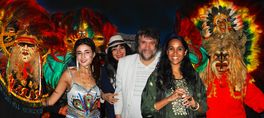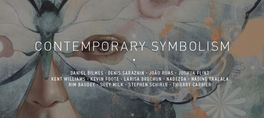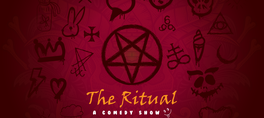Sat April 22, 2023
Art Exhibit. Nepalese painter, Tashi Gurung and Tibetan Thangkas
SEE EVENT DETAILS
In this exhibit, we'll present the Tibetan Art of Thangkas and Mandalas by the Nepalese master thangka artist, Tashi Gurung.
Contrary to the Western approach, some of the most central theological teachings and stories in the East were transmitted not through books and writing but through art in pictorial form. While in the Western world, the Holy Bible is the most-read and most translated book, in Tibet and Buddhism, the most important concepts weren't written but painted. Monks and gurus were taught to paint early on and tell the story of Buddha and Buddhism through scroll paintings or thangkas.
These scroll paintings were passed on through centuries and used as a visual aid to explain to people the meaning of Buddhism, its way of life, Buddha's life journey, the principle of reincarnation, the path to enlightenment, the path to happiness and eternity, and many other principles.
In the remote village of Lo Manthang, in the ancient Kingdom of Mustang, high in the Himalayas of Nepal, I met a Thangka artist, Tashi Gurung, four years ago. Tashi is a master thangka painter who has been part of several UNESCO-sponsored restoration projects in Ladakh, Bhutan, Nepal, Tibet, and others. Over the last four years, we've been working with Tashi to build this thangka collection.
In this exhibit, we'll present Tashi's most comprehensive collection with important thangkas and mandalas: Kalachakra Mandala, Mantra Mandala, Wheel of Life, The Life of Buddha, Path to Nirvana, Tree of Physiology, and others.
Just like Tibetan scholars more than a century ago, who traveled the world with these scroll paintings to different festivals and fairs and explained the meaning behind them, we'll try to do the same in our small but cozy Art House SF art gallery.
See Tashi's work in person starting at our opening reception on Saturday, April 22th.
Free
Presented by Art House SF Gallery
show less
Contrary to the Western approach, some of the most central theological teachings and stories in the East were transmitted not through books and writing but through art in pictorial form. While in the Western world, the Holy Bible is the most-read and most translated book, in Tibet and Buddhism, the most important concepts weren't written but painted. Monks and gurus were taught to paint early on and tell the story of Buddha and Buddhism through scroll paintings or thangkas.
These scroll paintings were passed on through centuries and used as a visual aid to explain to people the meaning of Buddhism, its way of life, Buddha's life journey, the principle of reincarnation, the path to enlightenment, the path to happiness and eternity, and many other principles.
In the remote village of Lo Manthang, in the ancient Kingdom of Mustang, high in the Himalayas of Nepal, I met a Thangka artist, Tashi Gurung, four years ago. Tashi is a master thangka painter who has been part of several UNESCO-sponsored restoration projects in Ladakh, Bhutan, Nepal, Tibet, and others. Over the last four years, we've been working with Tashi to build this thangka collection.
In this exhibit, we'll present Tashi's most comprehensive collection with important thangkas and mandalas: Kalachakra Mandala, Mantra Mandala, Wheel of Life, The Life of Buddha, Path to Nirvana, Tree of Physiology, and others.
Just like Tibetan scholars more than a century ago, who traveled the world with these scroll paintings to different festivals and fairs and explained the meaning behind them, we'll try to do the same in our small but cozy Art House SF art gallery.
See Tashi's work in person starting at our opening reception on Saturday, April 22th.
Free
Presented by Art House SF Gallery
In this exhibit, we'll present the Tibetan Art of Thangkas and Mandalas by the Nepalese master thangka artist, Tashi Gurung.
Contrary to the Western approach, some of the most central theological teachings and stories in the East were transmitted not through books and writing but through art in pictorial form. While in the Western world, the Holy Bible is the most-read and most translated book, in Tibet and Buddhism, the most important concepts weren't written but painted. Monks and gurus were taught to paint early on and tell the story of Buddha and Buddhism through scroll paintings or thangkas.
These scroll paintings were passed on through centuries and used as a visual aid to explain to people the meaning of Buddhism, its way of life, Buddha's life journey, the principle of reincarnation, the path to enlightenment, the path to happiness and eternity, and many other principles.
In the remote village of Lo Manthang, in the ancient Kingdom of Mustang, high in the Himalayas of Nepal, I met a Thangka artist, Tashi Gurung, four years ago. Tashi is a master thangka painter who has been part of several UNESCO-sponsored restoration projects in Ladakh, Bhutan, Nepal, Tibet, and others. Over the last four years, we've been working with Tashi to build this thangka collection.
In this exhibit, we'll present Tashi's most comprehensive collection with important thangkas and mandalas: Kalachakra Mandala, Mantra Mandala, Wheel of Life, The Life of Buddha, Path to Nirvana, Tree of Physiology, and others.
Just like Tibetan scholars more than a century ago, who traveled the world with these scroll paintings to different festivals and fairs and explained the meaning behind them, we'll try to do the same in our small but cozy Art House SF art gallery.
See Tashi's work in person starting at our opening reception on Saturday, April 22th.
Free
Presented by Art House SF Gallery
read more
Contrary to the Western approach, some of the most central theological teachings and stories in the East were transmitted not through books and writing but through art in pictorial form. While in the Western world, the Holy Bible is the most-read and most translated book, in Tibet and Buddhism, the most important concepts weren't written but painted. Monks and gurus were taught to paint early on and tell the story of Buddha and Buddhism through scroll paintings or thangkas.
These scroll paintings were passed on through centuries and used as a visual aid to explain to people the meaning of Buddhism, its way of life, Buddha's life journey, the principle of reincarnation, the path to enlightenment, the path to happiness and eternity, and many other principles.
In the remote village of Lo Manthang, in the ancient Kingdom of Mustang, high in the Himalayas of Nepal, I met a Thangka artist, Tashi Gurung, four years ago. Tashi is a master thangka painter who has been part of several UNESCO-sponsored restoration projects in Ladakh, Bhutan, Nepal, Tibet, and others. Over the last four years, we've been working with Tashi to build this thangka collection.
In this exhibit, we'll present Tashi's most comprehensive collection with important thangkas and mandalas: Kalachakra Mandala, Mantra Mandala, Wheel of Life, The Life of Buddha, Path to Nirvana, Tree of Physiology, and others.
Just like Tibetan scholars more than a century ago, who traveled the world with these scroll paintings to different festivals and fairs and explained the meaning behind them, we'll try to do the same in our small but cozy Art House SF art gallery.
See Tashi's work in person starting at our opening reception on Saturday, April 22th.
Free
Presented by Art House SF Gallery
show less
Date/Times:
2324 Market Street, San Francisco, CA 94114
The Best Events
Every Week in Your Inbox
From Our Sponsors
UPCOMING EVENTS
Great suggestion! We'll be in touch.
Event reviewed successfully.









